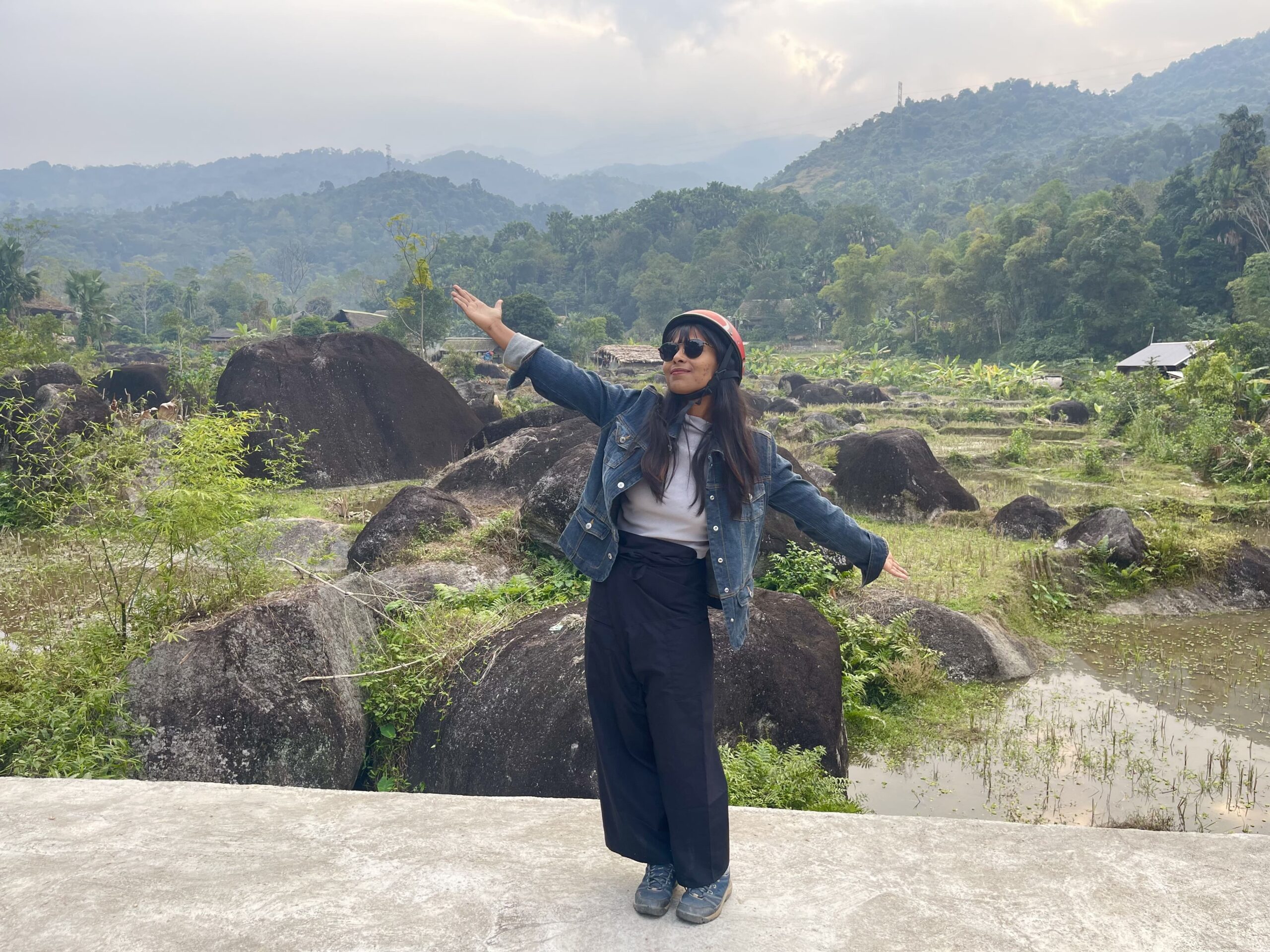The Festival of Colours is celebrated in the Kumaon region five days long. This is my first pahadi Kumaoni Holi with a local family in the mountains of Uttarakhand.
I have been immersed in the Indian culture from an early age, that too within the growing parameter of my own culture (by birth!). Holi is not an alien concept to me. Throughout my life, if not anything else, this tradition has been the middleground of all colours.

In the plains, the Holi celebration centres around its literal, colours. The use of colours is tremendous. Young men would put on steel-coloured faces and roam around with ‘badur rong’ (‘monkey colour’, a brownish colour exclusively made to shame every face). The dominance of colours instilled a Holi in my mind that remained my fixed projection of this celebration. To me, it is a festival of opening colour-fire. It is an opportunity for the children to throw water balloons at pedestrians, particularly towards those wearing clean clothes.
The mountainous Kumaoni Holi is more on the slope of ‘The Festival of People‘ rather than ‘The Festival of Colours’. Yet colours are there like the open road has wind. And the wind is very much cuddled in the open arms of the road. We love the wind, but we know only the open road can bring it to us the way we want it. It’s the same way the festival licks off colours. Colour is just an excuse. In secrecy, the Kumaoni people look for a festival.
One spiked-haired old woman was amused in her own costume. Blue gown, shrewd dark sunglasses, and a steel jug in hands, she was the sun and moon of the mahal.

Five whole days. The days have dissected the celebration in five unique ways. Men and women have separate ways and means of celebrating Holi. All night long women, or men, one or the other, engage in pahadi music and dance centering around their own long-tailed heritage. Kumaoni music and dance. They go around from house to house offering colours to neighbours and guests.
Kumaon. A snippet of mixed cuisines and mixed celebrations. Kumaoni Holi doles out colours with the aesthetics of out-of-the-world costumes. The old and the new, side by side, dress up in comic attires. Never had I seen Holi in costumes, or in the vicinity of such a vibrant cultural explosion. Here and there, on the street and by the street, men go out in groups, with dhol dangling from the neck of one, all clad in white and Kumaoni music. All night long the pahadi songs celebrate themselves.
Also read – Invited to A Garhwali Wedding in Ghori Khal Village

I kind of self-invited myself to a family Holi in a local’s house. I was volunteering at a cafe in Kasar and was away from the roots of Kumaoni culture. In the cafe, a certain type of people used to come who were pushing me further away from the cultural wallowing I craved. People coming to Kasar and settling there for months or years often have very little local curiosity. They are invested in everything apart from the roots. The one week I spent in the cafe was like gasping for air.
I could finally breathe with the local women. All I needed was to ask ‘Can I join?’ and the elders called me in. The newlyweds wore white saree bordered in red and the elders sat on charpais with a plate filled with gulal (colours). One woman was playing the dhol at the centre and others were dancing in rhymes in a grand circle. Some of their feet had been coloured in colourful designs. They sang the traditional Kumaoni Holi songs as they invited me to the circle as well. It was more like chanting.
All night long women, or men, one or the other, engage in pahadi music and dance centering around their own long-tailed heritage. Kumaoni music and dance.

One spiked-haired old woman was amused in her own costume. Blue gown, shrewd dark sunglasses, and a steel jug in hands, she was the sun and moon of the mahal. Another kid put on a brown wig and brown moustache posing as a male, in traditionally masculine clothes. Yet colour was there only to be there in Kumaoni Holi. For the sake of the pleasure of the name.
Only on the last day, locally named ‘chaleri‘, do the colours open up in a strong flow. The windows, the roofs, and the streets get to know the magnum of colours.
Colours in hands, colours in the water, colours on cheeks and palms – colours soak up the whole day in Kumaoni Holi. Then the next day, everything is bleak in regular colours again.
Have you ever played Kumaoni Holi in the mountains?
Support my solo adventures around the globe by joining the Patreon community.
Live the Adventure
Get weekly articles delivered to your doorstep and stay up-to-date with my new travel stories.





Leave a Reply